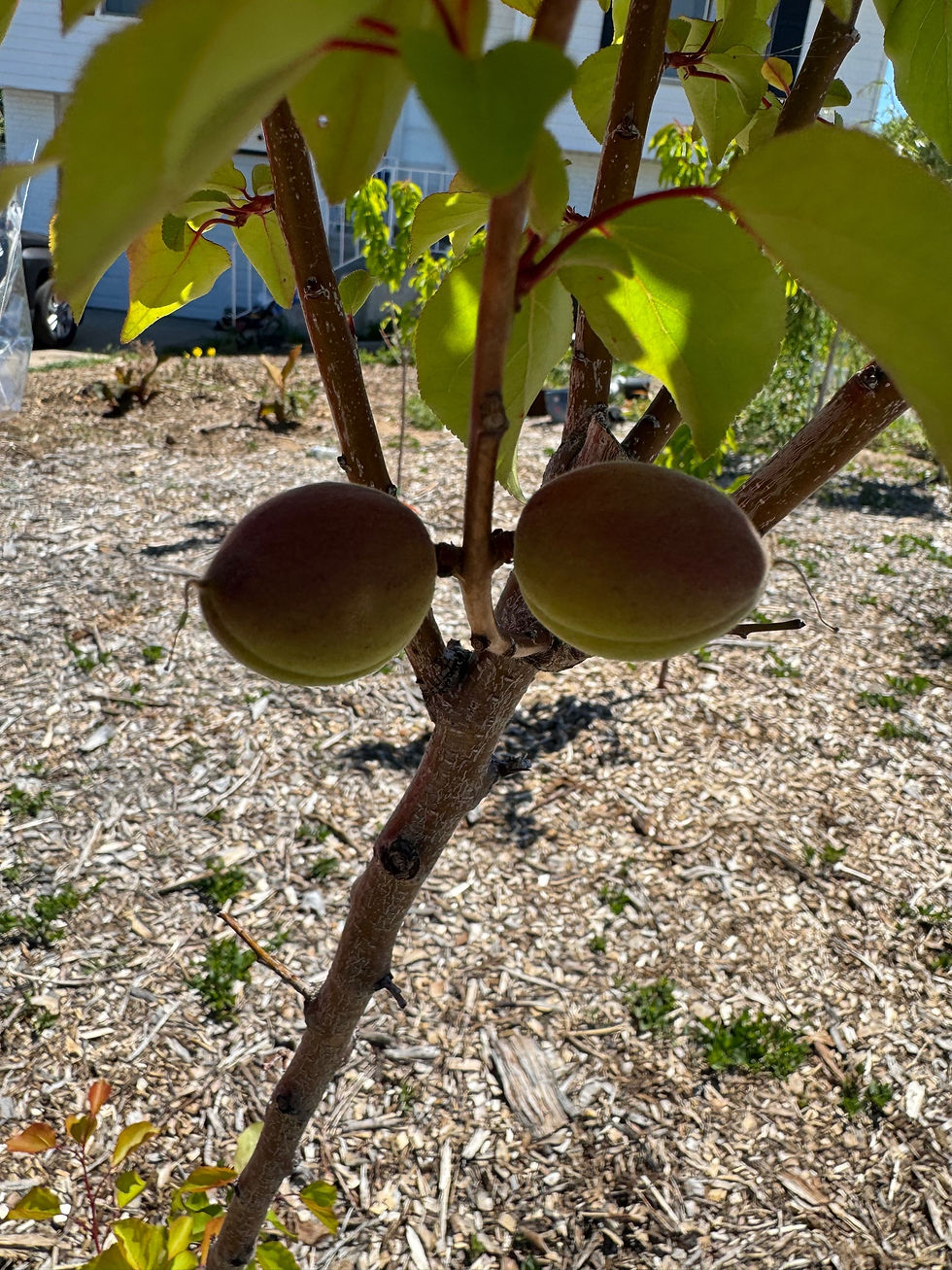Welcome to our garden blog, where we delve into the enchanting world of Chinese Mormon Apricots! In this post, we'll uncover the beauty, history, and cultivation secrets of these unique fruit trees.
Introducing the Chinese Mormon Prunus armeniaca Apricot:
The Chinese Mormon Apricot, also known as Prunus armeniaca 'Mormon,' is a captivating fruit tree with a rich heritage. Originating from northern China, this apricot variety was introduced to the United States by early Mormon pioneers in the 19th century, hence its name. It belongs to the Rosaceae family and is prized for its delicious fruit and ornamental value.
Captivating Blossoms:
One of the most mesmerizing features of the Chinese Mormon Apricot is its stunning blossoms. In early spring, before the leaves emerge, the tree is adorned with clusters of delicate white or pale pink flowers. These blossoms not only add a touch of elegance to the garden but also attract pollinators such as bees and butterflies, essential for fruit production.
Fruitful Harvest:
As the blossoms fade, small green fruits begin to form, gradually maturing into plump, golden-orange apricots. Chinese Mormon Apricots are renowned for their sweet and flavorful taste, making them a favorite among gardeners and fruit enthusiasts. Harvest typically occurs in late spring or early summer, depending on local climate conditions.
Cultivation Tips:
If you're considering growing Chinese Mormon Apricots in your garden, here are some essential tips to ensure success:
Climate: These apricots thrive in regions with cold winters and hot summers, making them suitable for USDA hardiness zones 5-8.
Sunlight: Plant your apricot tree in a location that receives full sunlight for optimal fruit production.
Soil: Well-draining, loamy soil is ideal for Chinese Mormon Apricots. Ensure proper soil pH (around 6.0-7.5) for healthy growth.
Watering: Provide regular watering, especially during dry spells and fruit development stages. Avoid waterlogged soil.
Pruning: Prune your apricot tree in late winter to early spring to promote airflow, remove dead/diseased branches, and shape the tree for better fruiting.
Garden Delights and Culinary Uses:
Beyond their ornamental and culinary value, Chinese Mormon Apricots offer a range of delights. From fresh eating to jams, preserves, and baked goods like apricot pies or tarts, these fruits add a burst of flavor to various dishes. Their versatility in both sweet and savory recipes makes them a prized addition to any kitchen.
Preserving Tradition and Heritage:
Growing Chinese Mormon Apricots isn't just about gardening; it's a way to preserve heritage and connect with the past. By cultivating these historic fruit trees, we honor the legacy of early pioneers and celebrate the cultural significance of food in our lives.
Other Varieties:
Moorpark Apricot: This is a classic apricot variety known for its large size, rich flavor, and juicy texture. Moorpark apricots have a golden-orange skin with a blush of red and are often used for fresh eating, drying, or canning.
Goldcot Apricot: Goldcot apricots are prized for their sweet and tangy flavor. They have a bright golden-yellow skin and firm flesh, making them suitable for fresh consumption, baking, or making jams and preserves.
Tomcot Apricot: Tomcot apricots are early-season cultivars known for their large size, sweet flavor, and aromatic qualities. They have a red blush over an orange skin and are excellent for eating fresh, drying, or cooking.
Tilton Apricot: Tilton apricots are popular for their tart-sweet flavor and firm texture. They have a deep orange skin with a red blush and are commonly used for canning, baking, and making apricot preserves.
Harglow Apricot: Harglow apricots are late-season varieties with a rich, sweet flavor and tender flesh. They have a reddish-orange skin and are ideal for fresh eating, desserts, and culinary creations.
Perfection Apricot: Perfection apricots are renowned for their exceptionally sweet and aromatic flavor. They have a yellow-orange skin with a red blush and are often enjoyed fresh, dried, or used in jams and pies.
Blenheim Apricot: Blenheim apricots, also called Royal apricots, are heirloom varieties known for their rich, sweet flavor and meltingly tender texture. They have a golden-yellow skin with a red blush and are excellent for eating fresh or making jams and desserts.
Royal Rosa Apricot: Royal Rosa apricots are small to medium-sized fruits with a deep orange skin and firm, juicy flesh. They have a sweet-tart flavor and are suitable for fresh eating, cooking, and preserving.
Conclusion:
As we conclude our exploration of Chinese Mormon Apricots, we invite you to consider adding these enchanting trees to your garden. Whether for their exquisite blossoms, delectable fruit, or historical charm, Chinese Mormon Apricots offer a rewarding gardening experience and a connection to nature's bounty. Let's continue to cherish and nurture these botanical treasures that bridge the past and present in our gardens and hearts.
Purchase a tree today and harvest from it this season!
Country Garden Nursery - West Haven- Kaysville
speak with KIM
Happy gardening!
Warm regards,
Instagram @foodforestutah
YouTube @foodforestutah
Facebook @foodforest Utah
FB group : the Secret Garden Society



Comentários